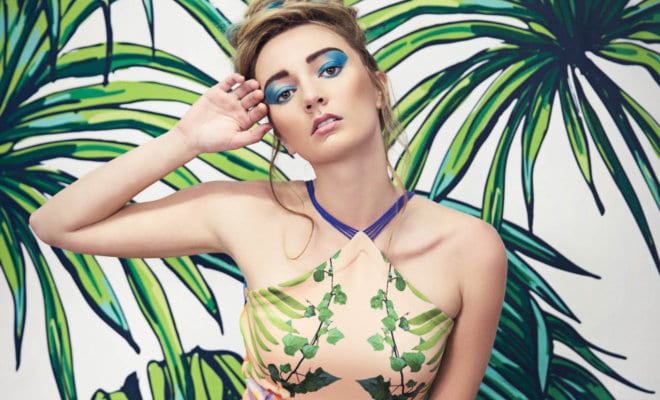Life
NRI Designers Ramp Up Presence in Fashion Industry

A Sandhya Garg creation.
Photo: Wendy Tam
The advantage that difference in perspective brings in a creative field is huge, and therein lies the strength that most Indian designers use to propel themselves.
Next to the handicapping the likely winning TV shows, the buzz at the award functions every year is over the designer creations that the stars will flaunt on the red carpet. While iconic designers like Armani and Oscar de la Renta always loom large, in recent years Indian-origin designers are beginning to jostle for space too.
Celebrity chef and Emmy-nominated host Padma Lakshmi, in a feature in Variety magazine, counted a Naeem Khan piece among the favorite outfits that she has donned over the years at the television awards. “I was proud to represent an Indian designer at the Emmys,” Lakshmi said.
Her comment underlines the rarity of occasions that Indian-origin fashion designers get to showcase their creations at global platforms. Khan, of course, is the flag-bearer for them all, decking out such stars as Michelle Obama and Kate Middleton. “It meant so much to me [to move to America]. It changed my life,” he told Elle. “And it’s taken me 30 years of struggle to get where I am.”
It’s a sentiment widely echoed by other designers of Indian descent who are settled abroad. “The journey is different for a fashion designer with Indian origins in the profession in the U.S.,” says Boston-based fashion designer Sandhya Garg, adding that she even faced racism because of her identity and continues to experience mild forms of it. “There are different problems as well as benefits because of my origin,” she says. “I have a unique fresh perspective about clothing, but I will always be an outsider.”
The advantage that difference in perspective brings in a creative field is huge, and therein lies the strength that most Indian designers use to propel themselves. “Those who live in the diaspora may have more creative freedom,” says Sandeep Panesar, lifestyle editor at Brown Girl magazine, an online publication in Canada targeted at South Asian women, pointing out that cultural and traditional expectations may make it tough for some fashions trends to be accepted in India compared to the West.

Sandeep Panesar.
However, the usual refrain about immigrants having to exceed expectations to succeed is not restricted to technology professionals. “We most often have to work harder to prove ourselves and our talent,” Manjot Bains, the co-founder of Anara Design Company, a modern textiles brand based in Vancouver, Canada, said.
Like other professionals in the field, designers from the Indian diaspora too have to make efforts to create their brand identity, line up the first customers and then get the word across to a broader audience. And the last step is perhaps where the acid test lies — to bag a big enough client who gives visibility to the brand in a foreign land.
Increasingly, Indian-origin designers are breaking through, and not just by their international celebrity client lists.
Bains says that brands like Bibhu Mohapatra, Naeem Khan, NorBlack NorWhite, and Injiri are available in international boutique and luxury department stores. “American celebrities wear Bibhu Mohapatra and Naeem Khan on the red carpet,” she says, adding that what really matters for exposing the brand to diverse audiences is finding a mentor, gaining experience with established designers, and working with a publicist to get the right media coverage and placement.
The cultural entrapments can sometimes be a millstone around the neck.
“Indian designers need to look past Bollywood,” says Panesar. “We were all gushing over Poo’s fashionable looks in Kabhi Khushi Kabhi Gham and so a lot of her looks were recreated for consumers to buy. However, even though Bollywood is a huge platform to market your designs, why do we have to wait to see Alia Bhatt or Kareena Kapoor-Khan wear something before it becomes ‘cool’?”

A Sandhya Garg creation. Photo: Wendy Tam
That’s a question that many fashion-lovers are left asking: Should Indian designers’ works be stereotyped to connote only shiny zardozi embroidery or bright colors in rich silks? Well, that’s not such a bad thing, argue some, since it’s a niche arena.
And it’s not just Indians who go looking for Indian designers as traditional events approach. Many non-South Asians turn to South Asian designers to help dress them for Indian weddings and other events, says Panesar. “Imagine a bridal party of 20 non-South Asian people all dressed in saris for their best friend’s wedding — it’s a great sight and a proud Indian moment,” she adds.
“You know that South Asians are making a mark in the industry when others are open to wearing your ethnic/traditional designs.”




You must be logged in to post a comment Login